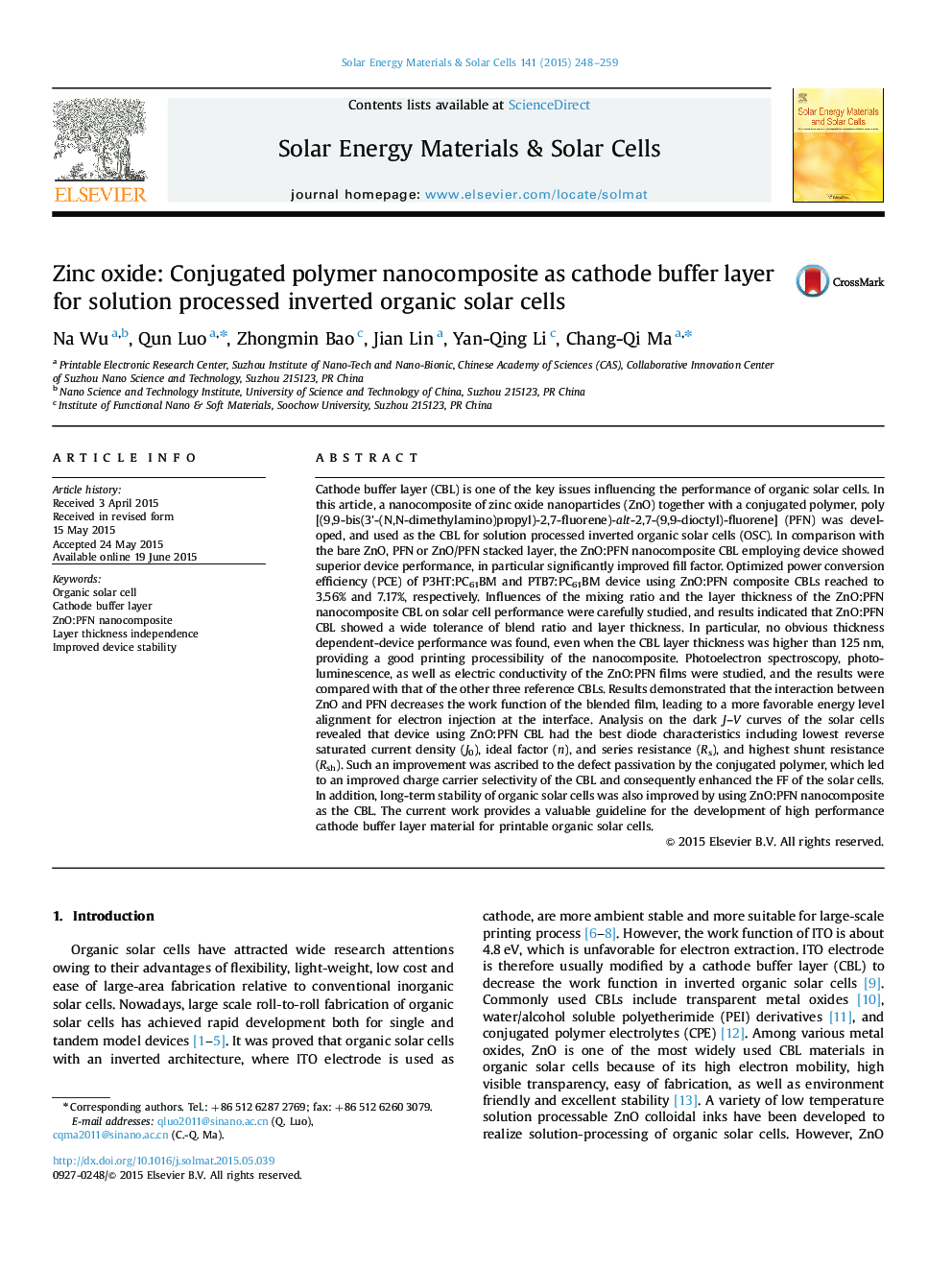| کد مقاله | کد نشریه | سال انتشار | مقاله انگلیسی | نسخه تمام متن |
|---|---|---|---|---|
| 77748 | 49298 | 2015 | 12 صفحه PDF | دانلود رایگان |
• ZnO:PFN nanocomposite was developed as cathode buffer layer for use in OPV.
• Higher device performance was achieved for ZnO:PFN based solar cells.
• Less thickness dependence was found for ZnO:PFN based cathode buffer layer.
• Devices having ZnO:PFN buffer layer showed improved long term stability.
Cathode buffer layer (CBL) is one of the key issues influencing the performance of organic solar cells. In this article, a nanocomposite of zinc oxide nanoparticles (ZnO) together with a conjugated polymer, poly[(9,9-bis(3'-(N,N-dimethylamino)propyl)-2,7-fluorene)-alt-2,7-(9,9-dioctyl)-fluorene] (PFN) was developed, and used as the CBL for solution processed inverted organic solar cells (OSC). In comparison with the bare ZnO, PFN or ZnO/PFN stacked layer, the ZnO:PFN nanocomposite CBL employing device showed superior device performance, in particular significantly improved fill factor. Optimized power conversion efficiency (PCE) of P3HT:PC61BM and PTB7:PC61BM device using ZnO:PFN composite CBLs reached to 3.56% and 7.17%, respectively. Influences of the mixing ratio and the layer thickness of the ZnO:PFN nanocomposite CBL on solar cell performance were carefully studied, and results indicated that ZnO:PFN CBL showed a wide tolerance of blend ratio and layer thickness. In particular, no obvious thickness dependent-device performance was found, even when the CBL layer thickness was higher than 125 nm, providing a good printing processibility of the nanocomposite. Photoelectron spectroscopy, photoluminescence, as well as electric conductivity of the ZnO:PFN films were studied, and the results were compared with that of the other three reference CBLs. Results demonstrated that the interaction between ZnO and PFN decreases the work function of the blended film, leading to a more favorable energy level alignment for electron injection at the interface. Analysis on the dark J–V curves of the solar cells revealed that device using ZnO:PFN CBL had the best diode characteristics including lowest reverse saturated current density (J0), ideal factor (n), and series resistance (Rs), and highest shunt resistance (Rsh). Such an improvement was ascribed to the defect passivation by the conjugated polymer, which led to an improved charge carrier selectivity of the CBL and consequently enhanced the FF of the solar cells. In addition, long-term stability of organic solar cells was also improved by using ZnO:PFN nanocomposite as the CBL. The current work provides a valuable guideline for the development of high performance cathode buffer layer material for printable organic solar cells.
Figure optionsDownload as PowerPoint slide
Journal: Solar Energy Materials and Solar Cells - Volume 141, October 2015, Pages 248–259
